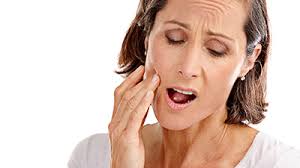
Have you been suffering from a headache that just won’t resolve and tried all possible remedies?
When you have a headache, you might not think your jaw could be the cause, but, the temporomandibular joint (TMJ) could be the culprit. It is the most important joint in our body that connects the skull with our jaw and helps us chew, speak and talk. A headache may result from structures related to the TMJ or pain may be referred to the area, secondary to a primary headache.
Common causes: Bruxism (grinding) and clenching, wear and tear of the joint, trauma to the head or face, an uneven bite caused by crooked teeth and stress.
Symptoms: The symptoms of TMJ pain include jaw clicking and popping, earaches, popping sounds in the ears, stiff or sore jaw muscles, locking of the joint, headaches, migraines, pain in the temple area and local pain in the joint.
Some simple exercise to help: Deep breathing exercise for relaxation – breath in for 4 seconds, and breathe out for 4 seconds – make sure to feel your rib cage expand. Use your fingertips to massage your jaw muscles in small circular motions. Now open your mouth as wide as you can. Hold your stretch for 10 seconds, and then relax your jaw. Repeat 5-10 times. Keep your tongue on the roof of your mouth, placing one finger on your TMJ and the other on your chin. Drop your lower jaw entirely and back. Repeat six times to complete one set.
Other Ways to Manage Your TMJ Pain: Pain relievers like ibuprofen and paracetamol, mouth guards to protect your teeth from grinding and Osteopathic Treatment (pressure point and dry needling techniques).
If this relates to you, then book in for an assessment with Dr Jane Moroz (coming from a dental background she has particular interest in facial and jaw related problems) or any of the team at Coast Osteo.
Osteopathic treatment helps to restore balance and function in the area. There will be plenty of fun exercises to help release the jaw too!
Written by Dr Jane Moroz Osteopath

